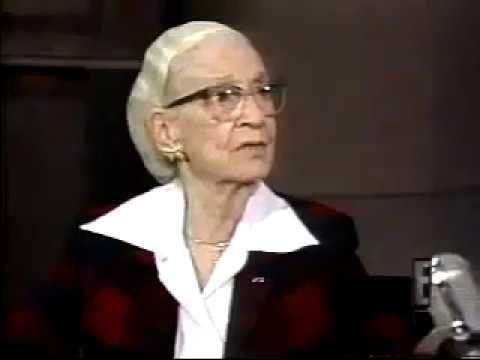Tales from the jar side: Top Computer Science Resumés, A new blog post, Good tweets, and a Health update
Dad Joke: My new job is running Old MacDonald's Farm. I'll be the CIEIO.
Welcome, fellow jarheads, to Tales from the jar side, the Kousen IT newsletter, for the week of May 22 - May 29, 2022. This week I taught a Mockito Testing course and a Spring and Spring Boot course on the O’Reilly Learning Platform, scheduled for the APAC time zones (in other words, the classes were 7pm - 11pm and 8pm to midnight for me).
Regular readers of this newsletter are affectionately known as jarheads, and are far more intelligent, sophisticated, and attractive than the average newsletter reader. If you wish to become a jarhead, please subscribe using this button:
As a reminder, this message is truncated in email, click on the title at the top to open it in a browser tab formatted properly for both the web and mobile. (You’ll need that this week, so you might want to click on the title now.)
Maybe You Don’t Care…
… as much about Stephen Curry as I thought.
Last week I claimed that the reason most people read this newsletter is for the weekly updates on how many free throws Steph — The Greatest Free Throw Shooter In The History Of The Milky Way Galaxy and both Large and Small Magellanic Clouds — missed during Golden State’s playoff games during the week. It turns out, to my surprise, that may not actually be true. Based on the feedback I received, most people read this newsletter (if they read it at all), for the funny tweets at the end.
So be it. Still, I can’t leave you hanging. In Game 3’s close win over the Dallas Mavericks on Sunday, Steph went 6 for 6, Good. But in their loss on Tuesday (which should have been a blowout but ended closer than that), he only went 4 for 5, or 80%. Not so good. On Thursday, in Game 5, the Warriors won, which ended the series and sent them to the Finals. Steph went 3 for 3 from the line, but he Warriors as a team went 16 for 16. Excellent. :)
The Finals start on Thursday, so this feature won’t be running much longer.
Top Five Computer Science Resumés
Since this is nominally a newsletter that relates to computer science (note the word “jar” in Tales from the jar side), let me go off on a tangent that I promise will connect back eventually.
Here are, IMHO, the Top Five Best Resumés in Computer Science:
5. Roy T. Fielding. Fielding is one of the founders of the Apache Software Foundation, part of the team that created the original Apache HTTP Server, and the author of the Ph.D. thesis Architectural Styles and the Design of Network-based Software Architectures, which coined the term REST for Representational State Transfer. That’s a bit of inside baseball, but using the REST style for building web services is the primary job of entire communities of developers these days. He worked on the original version of HTML, for crying out loud.
It mildly bothers me that he got away with using the word architecture in his thesis title twice. On the other hand, his website is at roy.gbiv.com, which is nicely clever.
(In case that’s not an obvious reference, Roy. G. Biv is the way kids are taught to remember the order of the colors of the rainbow: red, orange, yellow, green, blue, indigo, violet. At least that’s how I was taught when I was about 8.)
4. Admiral Grace Brewster Murray Hopper. (1906 - 1992). Hopper received her Ph.D. in Mathematics from Yale, then tried to enlist in the Navy during World War II but was rejected for being too old (34), too small (15 pounds below the minimum), and too valuable for the war effort in her current position as a professor at Vassar College. She enlisted in the Naval Reserves anyway. Hopper was one of the team that developed the UNIVAC computer, and helped create the COBOL programming language (of which there are still several trillion lines in use today). She retired as a Commander in 1966, was recalled to active duty in 1967, retired again in 1971, and was recalled yet again in 1972. She was promoted to Captain in 1973, Commodore in 1983, and in 1985 finally became a Rear Admiral.
Her log book from 1947, while working on the Mark II computer at Harvard University, contains the first ever reference to a bug:
The text says, “first actual case of a bug being found,” and referred to the process of removing it as “debugging.” That original moth is preserved in the Smithsonian.
She was famous for carrying around a nanosecond — a piece of wire just under a foot long that represents the distance light travels in 0.000000001 seconds, which she used to explain why satellite communications take as long as they do.
I could go on and on, including the annual Grace Hopper Celebration of Women in Computing conference, but just for brevity here is (most of) her appearance on Late Night with David Letterman show:
3. Sir Timothy Berners-Lee, who basically invented the World Wide Web. During his time at CERN (the European center for nuclear research), he conceived of the idea of hypertext and built the first prototype system of what eventually would evolve into the HTTP (Hypertext Transfer Protocol) specification. The fact that web addresses start with http is part of his legacy. But let’s face it: if your work in computer science gets you a freakin’ knighthood, you deserve to be on this list.
2. Alan Turing (1912 - 1954), British mathematician, computer scientist, logician, cryptanalyst, philosopher, and theoretical biologist. Turing is widely considered to be the father of theoretical computer science and artificial intelligence. His so-called Turing test attempts to distinguish between a conversation with a computer and a real person, which IMHO more real people fail than you might expect.
Turing’s work affects many parts of computer science, but he was seriously under appreciated during his lifetime, partly due to secrecy constraints during World War II and partly because of his prosecution in 1952 for homosexual acts. He accepted chemical castration as an alternative to prison, which presumably led to his death by cyanide in 1954. An inquest claimed his death was a suicide, but according to the linked Wikipedia page, “it has been noted that the known evidence is also consistent with accidental poisoning.”
The British government issued a formal apology in 2009 for the way he was treated, and his face now appears on the 50 pound note.
During the war, Turing worked a Bletchley park and helped create the foundation for modern computers. Part of his work focused on cracking the German Enigma code. This story became the subject of the 2014 movie The Imitation Game, starring Benedict Cumberbatch as Turing.
The movie shows a dramatic story where Turing and his team uncovered the Nazi plan to bomb Coventry in 1940, but withheld that information to keep the Nazis from finding out their codes had been broken. This is, frankly, ridiculous. No one short of Churchill himself would have been responsible for that decision, and the story that Churchill held back the defenses or failed to evacuate the city is a myth.
The truth, according to this article from the International Churchill Society, was that the Enigma decrypt suggested an attack was imminent, but not where it would occur. Once they realized the target was Coventry, British defenses immediately went into action. All possible countermeasures were taken on that day. It’s still a good movie, though, and Cumberbatch does his usual excellent job.
And the Number 1 Best Resumé in Computer Science belongs to:
1. Haskell “Steph” Curry (1900 — 1982), American mathematician and logician. His first name, Haskell, is the definitive purely functional programming language. His last name in the form of a verb is currying, which is a technique in functional programming for converting a function of several arguments into a sequence of functions where each takes a single argument. Sure, he may not be as well known as some of the others on this list, but if all you need for your resumé is your name, you win.
Sadly, I don’t believe there is any real connection between Haskell Curry and Steph Curry, but there should be. I know what you’re thinking, and yes, that was a long way to go for a gag, but hopefully it was worth it.
(I was seriously tempted to add one more entry:
0. Trisha Gee, a Java Champion and good friend of mine (Hi Trisha!), who needs to be included here
partly because of the computer science habit of counting from zero,
partly because she’ll naturally be horrified to be on this list, and
partly because this week she somehow managed to achieve the Herculean feat of completing the 3rd edition of Head First Java, now released by O’Reilly Media.
That book contains one of the most innovative approaches to teaching programming ever (from the original authors, Bert Bates and Kathy Sierra), but has been way out of date for over a decade. Seriously, the previous edition is on Java 5 (current is Java 18), which was released in 2004. That Trisha managed to somehow get her co-authors to agree to a new edition, and then wrote all the updates necessary to get it published, is remarkable. Trisha, I salute you, even if you are “only” third author on the book. 😊 )
Technical Content Moved To My Blog
In many of these newsletters, I include a technical section talking about something I learned recently or discovered during one of my training classes. For example, a couple issues ago I included a section about the queryForStream method in Spring’s JdbcTemplate class.
This week I bundled up that section and added it to my blog, which you can find at kousenit.org. Here’s a direct link to that post, in case you would like to see it.
While adding the post I decide to change the theme of my blog to Meraki, whatever that is. It’s definitely cleaner and easier to read, and makes the embedded source code look better. Let me know what you think.
Tweets And Stuff
Speaking of Bugs
If you want to feel better about the world, you need to click on this tweet and read the associated Twitter thread. It’s charming.

I guess I should say it’s both charming and strange.
I’m glad some people study entomology, but you honestly could not pay me enough to be one of them.
Dancing To The Hits
Check this out:
I love stuff like that, where cultures get mixed in fascinating ways.
The Tragedy in Uvalde
Yeah, I get that. My only take on the massacre was this one:
Steve Kerr said it best.
Health Update
Last week I mentioned that I was headed back into the hospital for an angiogram (also known by the scary name heart catheterization). I went through the procedure on Friday, and to keep a long story short for a change, everything went fine. After the injection of the combination of really, really good drugs into my wrist, I fell asleep and pretty much slept through the whole procedure. As a big fan of naps and not a fan of pain, I highly recommend that approach.
The results suggested some plaque build up near the heart, but nothing serious that can’t be treated with medication (okay), diet (ugh), and exercise (double ugh). In other words, it’s all good and I’m fine.
A friend of mine said “pics or it didn’t happen,” and for a moment I was tempted to post a couple, but then I remembered I’m not completely insane and decided not to do that. I did text my sister and told her they had to take my whole arm off, but she knows me too well to take that seriously. It did remind me of this old gag, though, posted in r/jokes on reddit three years ago:
I’m afraid there was one casualty. I had to be at the hospital at 6am Friday and was not allowed any breakfast. (I asked the nurses to add coffee to my IV, but no such luck.) That meant I didn’t do my Wordle word that morning, and by the time I got home I forgot I hadn’t completed that day’s word yet. So my Wordle streak has been reset to 1 again (now 2). Sigh. Good thing my heart turned out basically fine, I guess.
As a reminder, you can see all my upcoming training courses on the O’Reilly Learning Platform here and all the upcoming NFJS Virtual Workshops here.
Last week:
Mockito and the Hamcrest Matchers, on the O’Reilly Learning Platform
Modern Java: Functional Programming, an NFJS Virtual Workshop
This week:
Deep Dive Into Spring, an NFJS Virtual Workshop
Managing Your Manager, on the O’Reilly Learning Platform












